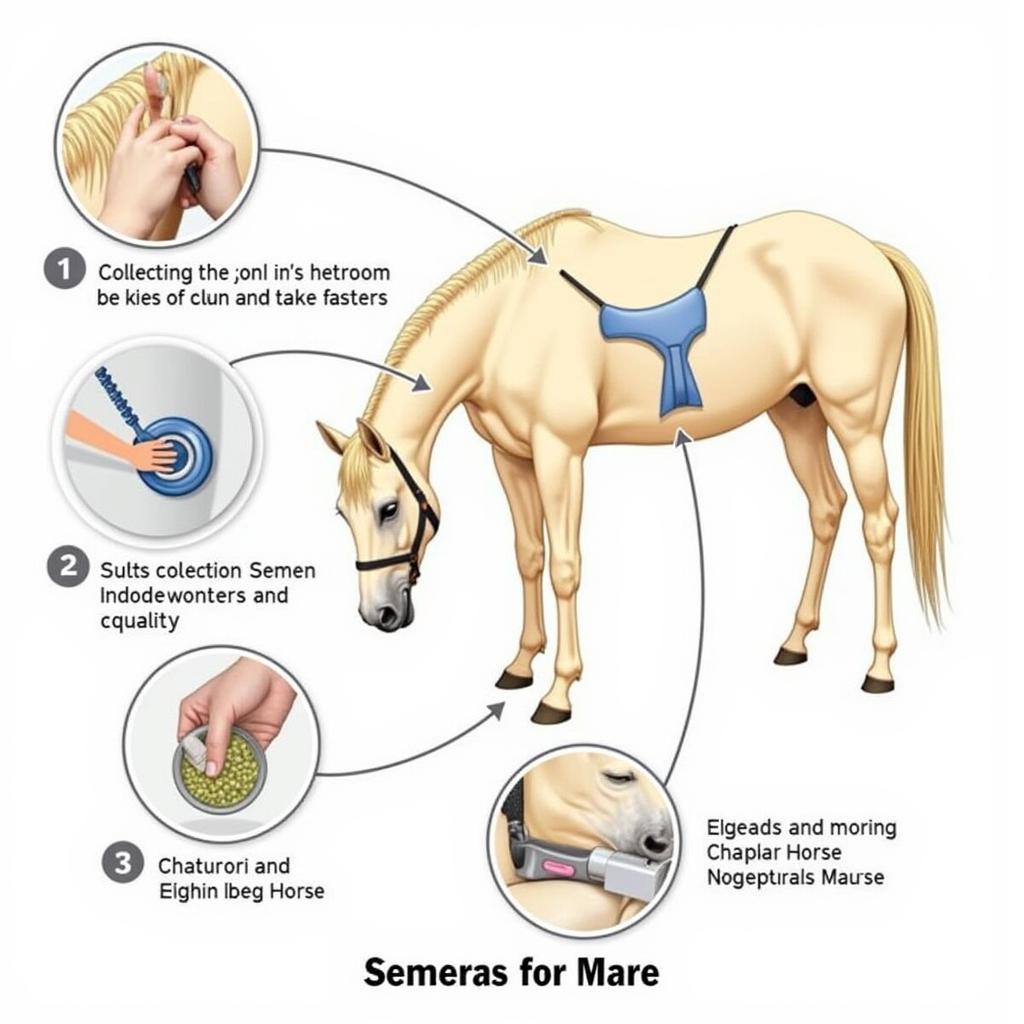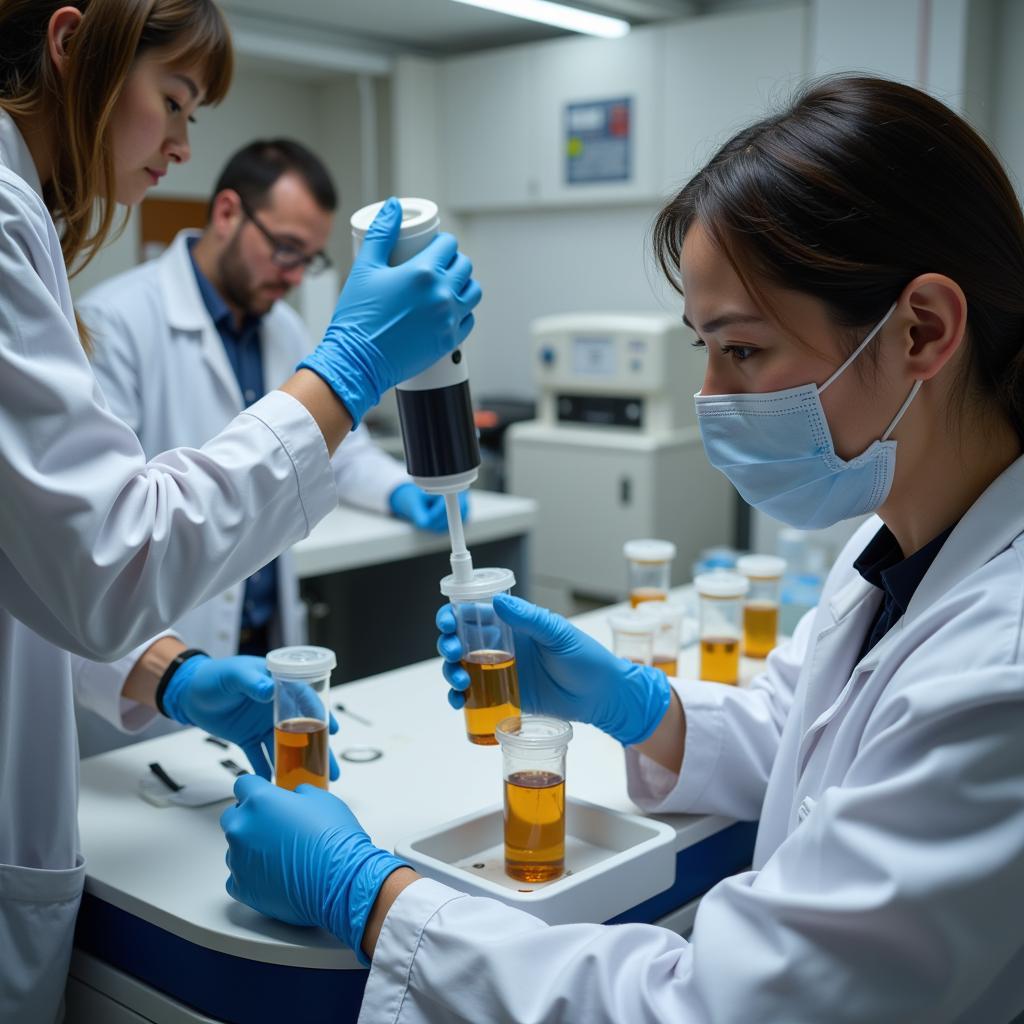Artificial breeding in horses has revolutionized equine reproduction, offering breeders greater control over genetics, access to superior stallions, and improved disease management. This guide delves into the intricacies of artificial insemination (AI) and other assisted reproductive technologies, providing valuable insights for horse owners and breeders considering this advanced breeding method. After this introductory paragraph, you can find our first internal link to a horse breeding contract.
Understanding Artificial Breeding in Horses
Artificial breeding encompasses several techniques, with artificial insemination being the most common. AI involves collecting semen from a stallion and depositing it into the mare’s uterus during estrus, bypassing natural mating. This method allows breeders to utilize stallions located far away, access superior genetics, and minimize the risk of venereal diseases. Other assisted reproductive technologies, while less common, include embryo transfer and in-vitro fertilization, which offer even more advanced breeding options. These techniques, especially AI, provide solutions to various breeding challenges while maximizing the potential for successful pregnancies.
Benefits of Artificial Insemination in Horses
AI offers numerous advantages for horse breeders. It provides access to a wider gene pool, allowing for the selection of stallions with desirable traits regardless of location. Transporting semen is considerably easier and less expensive than transporting a stallion, and it significantly reduces the risk of injury to both mare and stallion during breeding. Moreover, AI allows for careful monitoring of semen quality and quantity, optimizing the chances of fertilization. Frozen semen can even be used posthumously, preserving valuable bloodlines. Did you know you can purchase horse insemination equipment? It makes the process much more manageable.
 Artificial Insemination Process in Horses
Artificial Insemination Process in Horses
The Artificial Insemination Process: A Step-by-Step Guide
The AI process involves several carefully orchestrated steps: First, the mare’s estrus cycle must be closely monitored to determine the optimal time for insemination. Next, semen is collected from the stallion using specialized equipment. The collected semen is then evaluated for quality, including motility and concentration. Once deemed suitable, the semen is either used fresh, cooled, or frozen for later use. Finally, the semen is deposited into the mare’s uterus using a specialized catheter. Precise timing and technique are crucial for successful fertilization.
What are the Costs Associated with Artificial Breeding Horses?
The cost of artificial breeding can vary depending on several factors, including the stallion’s stud fee, the type of semen used (fresh, cooled, or frozen), veterinary fees, and any additional procedures required. While the initial investment might seem higher compared to natural breeding, the long-term benefits and potential for producing higher-quality offspring often justify the expense.
 Horse Semen Collection and Analysis
Horse Semen Collection and Analysis
Choosing the Right Stallion for Artificial Insemination
Selecting a suitable stallion is paramount to successful artificial breeding. Consider the mare’s conformation, temperament, and pedigree, and choose a stallion whose traits complement hers. Research the stallion’s performance record, health history, and genetic background. Consult with experienced equine veterinarians and breeding specialists to make an informed decision. Factors like the intended use of the offspring and the desired genetic traits should guide your decision-making process. Remember, the goal is to produce healthy, well-conformed foals with the desired characteristics. Have you ever considered using an AI horse generator? It can be a fun way to explore potential breeding outcomes.
Addressing Common Concerns about Artificial Breeding
Some breeders express concerns about the potential risks associated with AI, such as reduced fertility rates or increased incidence of birth defects. However, with proper technique and experienced professionals, these risks are minimal. Moreover, advancements in AI technology continue to improve success rates and minimize potential complications. Choosing reputable facilities and experienced veterinarians is essential for successful and safe artificial breeding.
The Future of Artificial Breeding: AI-Generated Horses and More
The field of equine reproduction continues to evolve rapidly. Technologies like AI generated horses and race horse generators offer exciting possibilities for the future of breeding. While these technologies are still in development, they hold the potential to further refine breeding practices and potentially personalize the traits of future generations.
 Mare Undergoing Artificial Insemination
Mare Undergoing Artificial Insemination
Conclusion
Artificial breeding, particularly artificial insemination, has become a cornerstone of modern horse breeding. It offers breeders unparalleled control over genetics, access to superior stallions, and enhanced disease management. By understanding the process, benefits, and considerations associated with Artificial Breeding Horses, breeders can make informed decisions and maximize their chances of producing healthy, high-quality foals. Artificial breeding is a powerful tool that can shape the future of equine genetics.
FAQs
- What is the success rate of artificial insemination in horses?
- How is frozen semen stored and transported?
- Can any stallion be used for artificial insemination?
- What are the signs of estrus in mares?
- How long does it take for a mare to become pregnant after artificial insemination?
- What are the advantages of using cooled semen over frozen semen?
- How can I find a reputable artificial insemination facility?
Common Scenarios and Questions:
- Scenario: A mare fails to conceive after several attempts at artificial insemination.
- Questions: What diagnostic tests can be performed to identify the underlying cause? What alternative breeding strategies can be considered?
- Scenario: A breeder wants to import frozen semen from a stallion in another country.
- Questions: What import regulations and health requirements need to be met? What is the best way to transport the semen and maintain its viability?
Further Exploration:
We recommend checking out these other helpful resources on our website: [Link to article about horse nutrition], [Link to article about foal care].
Need Help? Contact Us!
For assistance with artificial breeding or any other equine-related inquiries, please contact us: Phone: 0772127271, Email: [email protected] or visit us at QGM2+WX2, Vị Trung, Vị Thuỷ, Hậu Giang, Vietnam. We have a 24/7 customer service team ready to assist you.